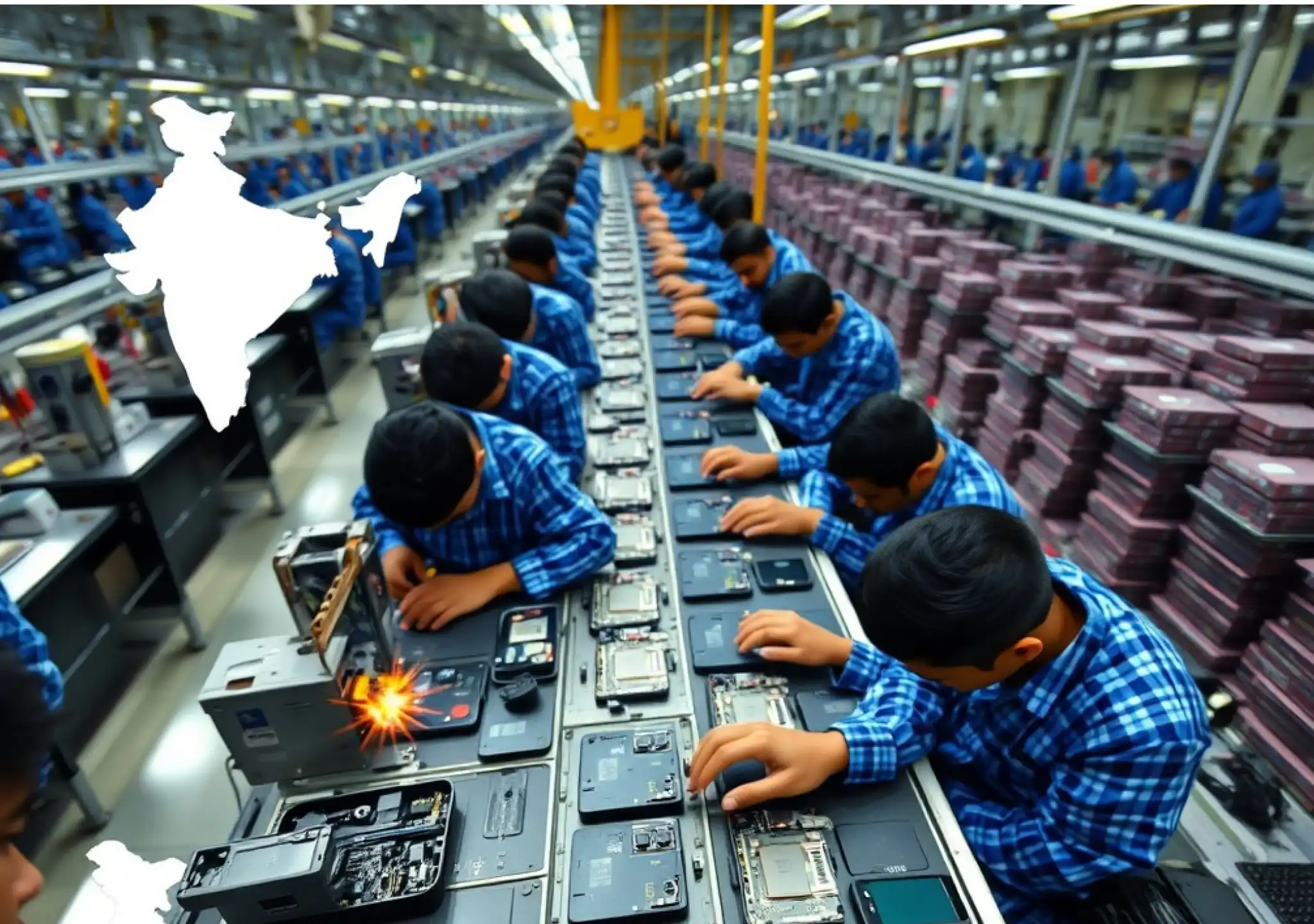Noida, India – At a bustling smartphone facility near the Indian capital, Motorola devices are being assembled by precision machinery and skilled workers. Machines install CPUs onto motherboards with exactitude, while lasers mark each item with barcodes amid tiny bursts of smoke. Elsewhere, workers clad in blue checkered uniforms methodically insert speakers, microphones, and cameras into smartphone shells.
Just over two years since Dixon Technologies started making smartphones for Motorola in Noida, the company is already producing 500,000 units a month. That number is set to climb to 600,000 next quarter and 850,000 by January. The firm also has upcoming plans to assemble tablets for Motorola’s parent company, Lenovo. Given rising demand, Dixon is eyeing a major expansion of its facility.
Dixon is one of several Indian firms benefitting from Prime Minister Narendra Modi’s drive to boost local manufacturing amid escalating US-China tensions, which are pushing global companies to diversify their supplier base.
“There’s strong momentum in the sector with international brands adopting a China plus-1,2,3 approach,” Dixon’s CFO, Saurabh Gupta, told Al Jazeera, referring to companies seeking multiple manufacturing options beyond China.
PLI Scheme Gives Incentives for Local Growth
The Modi government’s Production Linked Incentive (PLI) scheme aims to promote manufacturing in industries like electronics, textiles, and pharmaceuticals. Under the plan, firms receive financial incentives for consistently growing their sales over a five-year period. For mobile phones, the incentives range from 4–6 percent of sales and are reserved for five Indian and five foreign companies that meet yearly targets.
To qualify, foreign companies must produce goods with a minimum factory price of $200.
Although India’s manufacturing sector has traditionally lagged behind China—remaining around 18-19 percent of GDP for decades—successive governments have sought to transform it into a major job-generating engine. In 2015, Modi’s “Make in India” campaign launched to entice companies to manufacture locally. This was followed by tariffs on imported mobile phone parts to encourage in-country assembly.
More recently, the Indian government has imposed import restrictions on laptops and tablets, requiring firms to obtain special licenses. After criticism, the deadline was extended to October.
Dixon, which also manufactures home appliances and wearables, is one of the five Indian electronics firms selected under the PLI scheme—and the only one so far to actually receive incentive payments for meeting targets. This raises questions about the broader effectiveness of the program.
Expanding Capacity Without Exiting China
According to Barclays MD Rahul Bajoria, firms are unlikely to significantly scale down operations in China due to its massive market size and importance for new product rollouts. However, India and other countries are becoming attractive for additional or replacement manufacturing.
“It’s not about reducing China operations, but expanding capacity elsewhere,” said Bajoria. He believes India’s policies are beginning to yield “tangible progress.” He emphasized that scaling up production is a gradual process that requires steady capacity building.
India’s trade data hints at early gains. In the past year, India exported a record $14.8 billion worth of smartphones—including iPhones—compared to $17.6 billion in imports.
Apple, which began assembling its iPhone SE in India in 2017, now produces about 7 percent of its global iPhones there. In 2022, Apple began assembling the iPhone 14 in India and is reportedly gearing up to manufacture the iPhone 15 locally as well.
Dependency on Chinese Components Remains High
Despite these gains, India still heavily relies on importing electronic components—most of them from China. In the 12 months ending July, India imported $73.5 billion in electronics, making it the third-largest import category after oil and gems/jewelry.
“There is incremental value addition happening, and the hope is for this to grow over time,” Bajoria noted.
However, India Ratings economist Sunil Sinha argues that true value lies in actual manufacturing rather than just assembling. “We still have a long way to go,” he said.
Sinha added that for India to build a stronger manufacturing ecosystem, small and medium-sized enterprises (SMEs)—which form the backbone of the sector—must become key suppliers to larger companies. But many SMEs are still struggling from recent disruptions like the pandemic, income tax changes, and the withdrawal of the 2,000-rupee note.
“These small firms are still in survival mode,” Sinha said. “They’re not in a position to seize new opportunities yet.”
Nonetheless, he is optimistic that India could be on the brink of a new capital investment wave that might uplift the manufacturing sector.
“This could spark a chain reaction that eventually benefits small businesses as well,” he said. “The electronics sector could see this transition. Indian SMEs are quite adaptable, but they need demand and proper support structures to thrive.”

